2. 长江南京航道工程局,江苏 南京 210011
2. Changjiang Nanjing Waterway Engineering Bureau, Nanjing 210011, China
船舶生产制造、海上航运等细分工业领域具有高污染、高能耗的特点,针对船舶工业领域的新能源开发也成为一项行业内的研究热点[1]。
海上蕴藏丰富的风能、太阳能等可再生能源,而这些可再生能源的利用却非常低,具有非常广阔的应用潜力。目前,基于光能和风能的新能源技术不断发展,风力助航船是一种利用风能进行船舶动力助航的船舶种类,相对于传统柴油动力船舶,风力助航船利用海上丰富的风能资源,可以提高船舶动力系统的能源利用率,降低船舶成本。
本文针对风力助航船的风速监测技术进行深入研究,建立一种基于超声波风速传感器的风速监测平台,详细阐述了风速监测平台的构成和工作原理。
1 风速监测技术的研究与发展现状风向、风速监测技术经历了较长时间的发展,在各个领域都有重要的应用,尤其是气象监测、风电领域、船舶领域,常用的风速风向测试技术包括风杯测试法、超声波测试法等,本文在设计风力助航船的风速监测平台时,主要采用的是超声波风速测试传感器,超声波测试法又可以细分为时差法、多普勒法等,本文主要介绍多普勒法。
多普勒法是利用多普勒效率[2]进行风速风向测量的一种方法,当气体中含有悬浮颗粒时,超声波信号的多普勒频移可以表示为:
| $ \Delta f = {f_r} - {f_s} = 2V \times {f_s} \times \frac{{\cos \theta }}{c} \text{。} $ |
式中:
由式(1)可得风速为:
| $ V = \frac{{\Delta f \times c}}{{2{f_s} \times \cos \theta }} \text{。} $ |
1)单向测速
图1为基于多普勒法的单向风速测量原理。
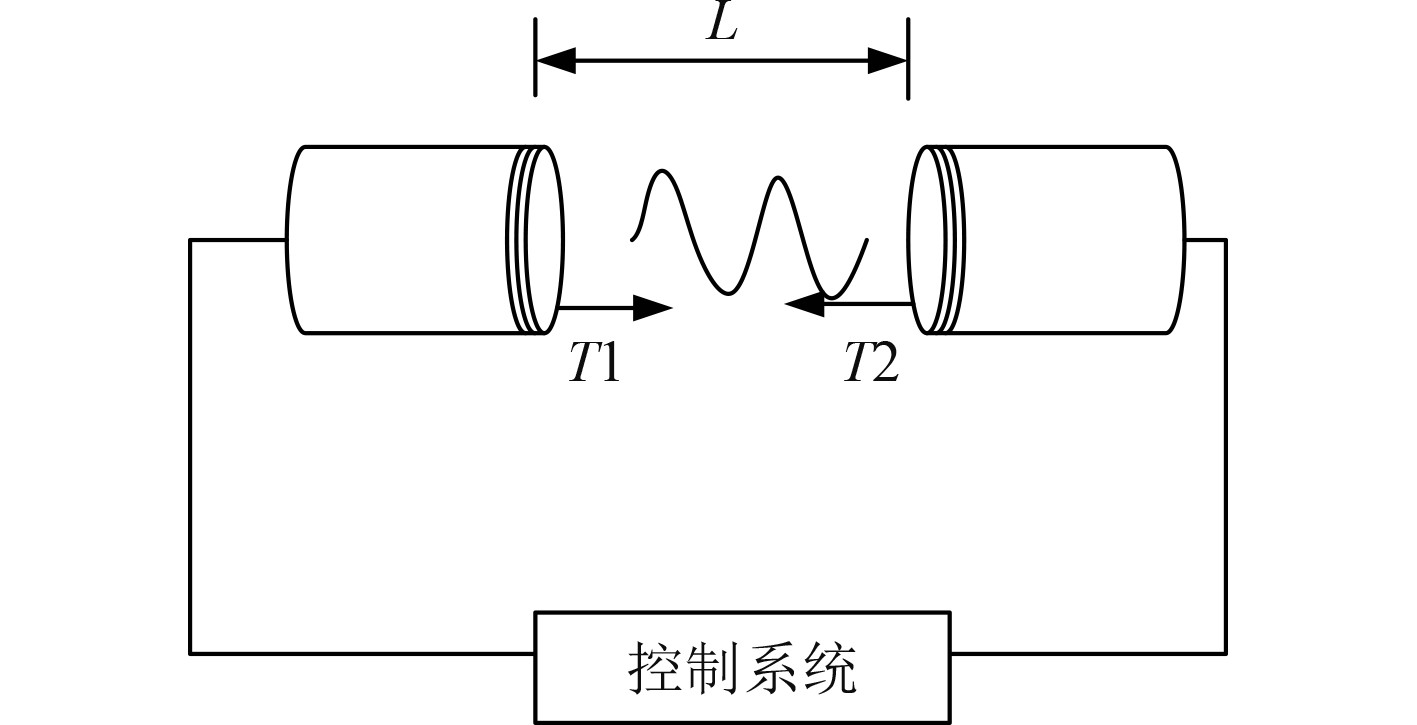
|
图 1 基于多普勒法的单向风速测量原理 Fig. 1 Principle of one-way wind speed measurement based on Doppler method |
假设2个超声波装置之间的距离为d,超声波传播的速度为
| $ \begin{gathered} \frac{d}{{{t_{12}}}} = {V_s} + {V_w} \text{,} \\ \frac{d}{{{t_{21}}}} = {V_s} - {V_w} \text{,} \\ \end{gathered} $ |
进而得到风速
| $ {V_{\text{w}}} = \frac{d}{2}\left( {\frac{1}{{{t_{12}}}} - \frac{1}{{{t_{21}}}}} \right) 。$ |
这种风速测量精度非常高,但只能测量单一风向的数据,且在实际应用场景中,风向往往是多向且不断变化的。
2)多向测速
多向测速的原理图如图2所示。
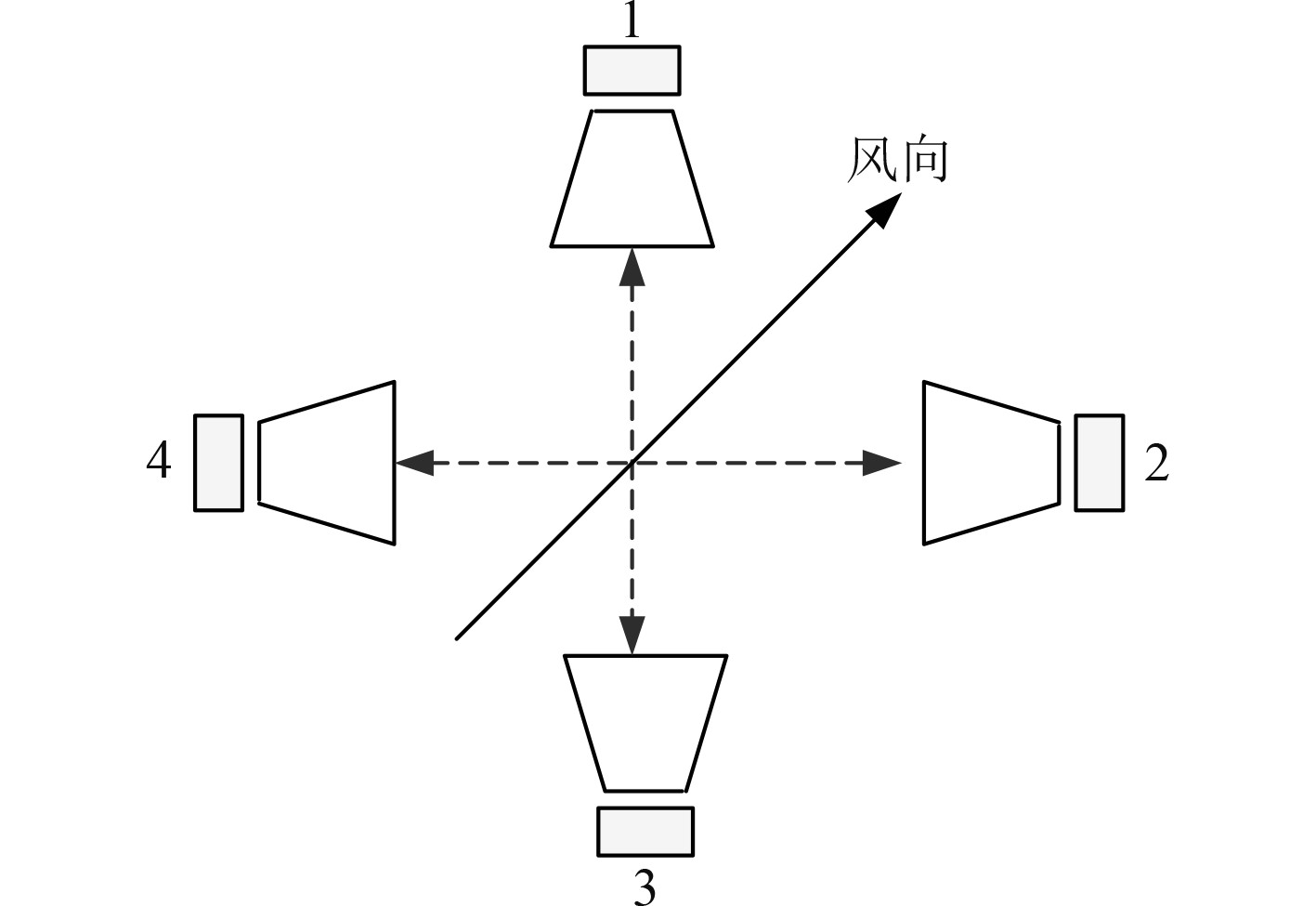
|
图 2 基于多普勒法的多向风速测量原理 Fig. 2 Principle of multidirectional wind velocity measurement based on Doppler method |
假设多个方向上有4组超声波装置,距离为d,超声波传播的速度为
| $ \begin{gathered} {V_{wx}} = \frac{d}{2}\left( {\frac{1}{{{t_{12}}}} - \frac{1}{{{t_{21}}}}} \right) \text{,}\\ {V_{wy}} = \frac{d}{2}\left( {\frac{1}{{{t_{34}}}} - \frac{1}{{{t_{43}}}}} \right)\text{,}\\ \end{gathered} $ |
可求得此时的风速为:
| $ {V_w} = \frac{d}{2}\sqrt {\left( {{{\left( {\frac{1}{{{t_{12}}}} - \frac{1}{{{t_{21}}}}} \right)}^2} + {{\left( {\frac{1}{{{t_{34}}}} - \frac{1}{{{t_{43}}}}} \right)}^2}} \right)} \text{。} $ |
此时的风向为:
| $ \cos \beta = \frac{{{V_{wx}}}}{{{V_{wy}}}} 。$ |
风力助航船的风速监测平台具备以下功能:
1)数据的采集
监测平台基于超声波风速监测仪器和RS485通信电路,进行风速、风向的采集。同时,监测平台还会同步采集船的航行速度、姿态角等参数[3]。
2)数据传输
平台采集的风资源数据发送至单片机中和上位机中,并在上位机中进行存储,单片机通过RS232通信接口将指令传送至平台的其他单元。
3)数据的处理和显示
系统采用MSP430单片机进行数据的处理,并通过液晶显示器将风资源数据展示给用户,图3为风力助航船的风速监测平台原理图。
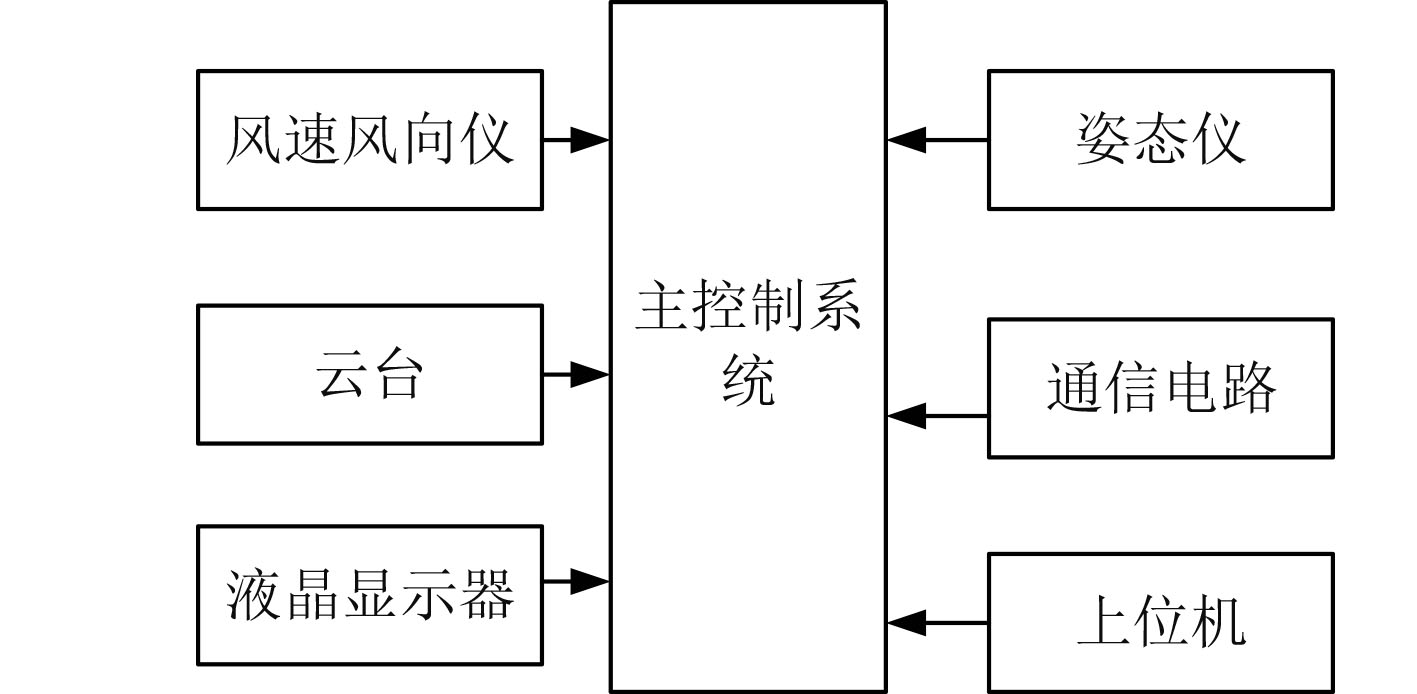
|
图 3 风力助航船的风速监测平台原理图 Fig. 3 Schematic diagram of wind speed monitoring platform for a wind-aided vessel |
1)主控制系统
主控制系统是风力助航船的风速监测平台核心,本文选用16位MSP430型单片机[4],该单元集成了60 Kflash空间和2 k ram存储空间,具有2个串行通信接口,既能与上位机进行串口数据传输,也能同步或异步接收风速仪的数据。
2)姿态仪
针对船舶多自由度运动过程的姿态参数采集需求,本文采用三轴加速度传感器MPU-600,该传感器的性能出众,具有三轴MEMS加速度计和可扩展处理器DMP。同时,姿态仪还具有其他数据接口,可以外接非惯性传感器,如温度传感器和压力传感器等。
3)液晶显示器
风力助航船监测平台采用LCD液晶显示器作为人机交互接口,LCD显示器通过PSB引脚[5]的高低电平确定串口显示,LCD液晶显示器的引脚时序如图4所示。
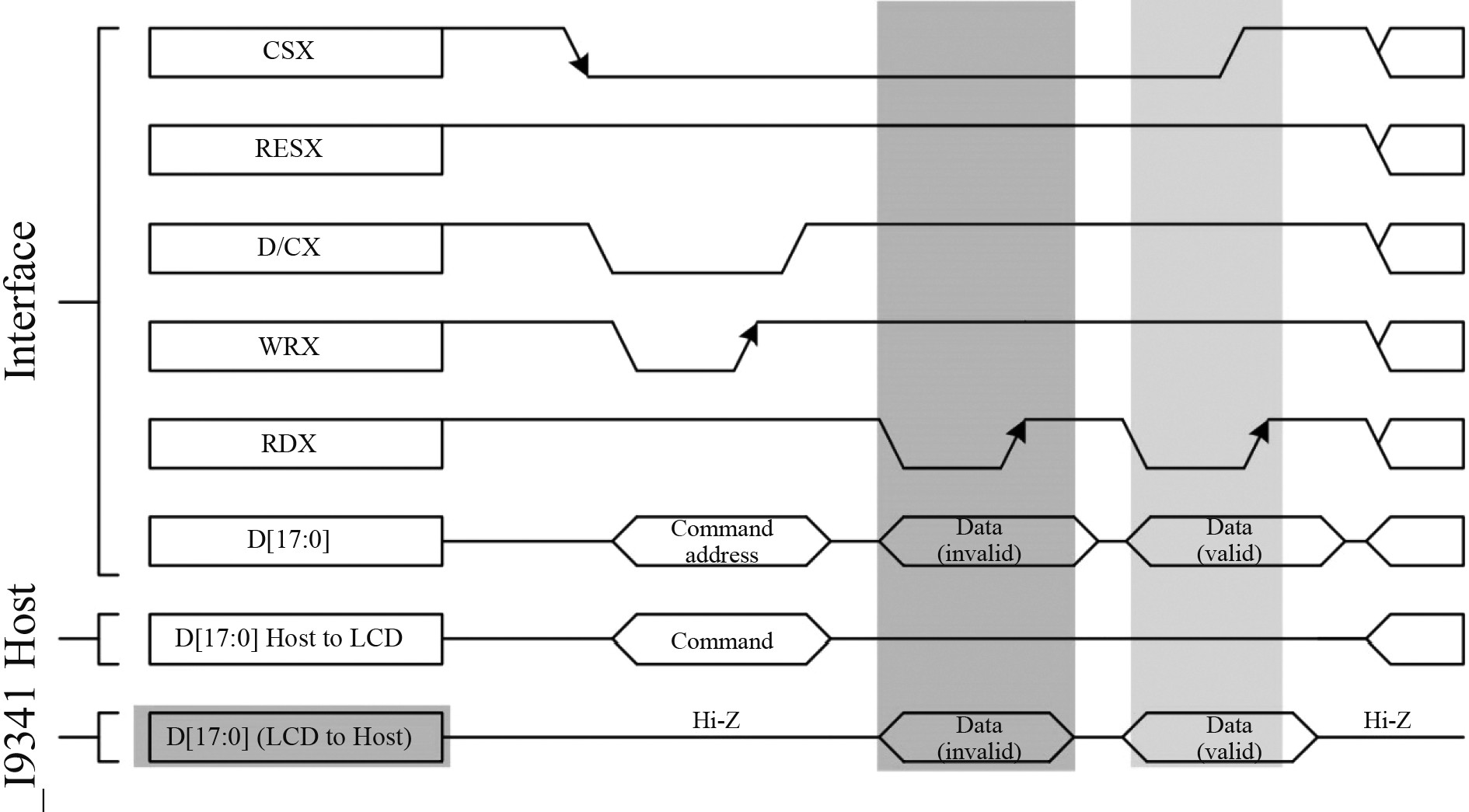
|
图 4 LCD液晶显示器的引脚时序图 Fig. 4 Pin sequence diagram of LCD liquid crystal display |
为了提高风速监测平台的数据采集精度,针对不同风向下的数据采集结果,本文提出一种风向矢量合成的数据后处理算法。该算法将风的空间矢量分解到X轴和Y轴两个分量,矢量合成的原理如图5所示。
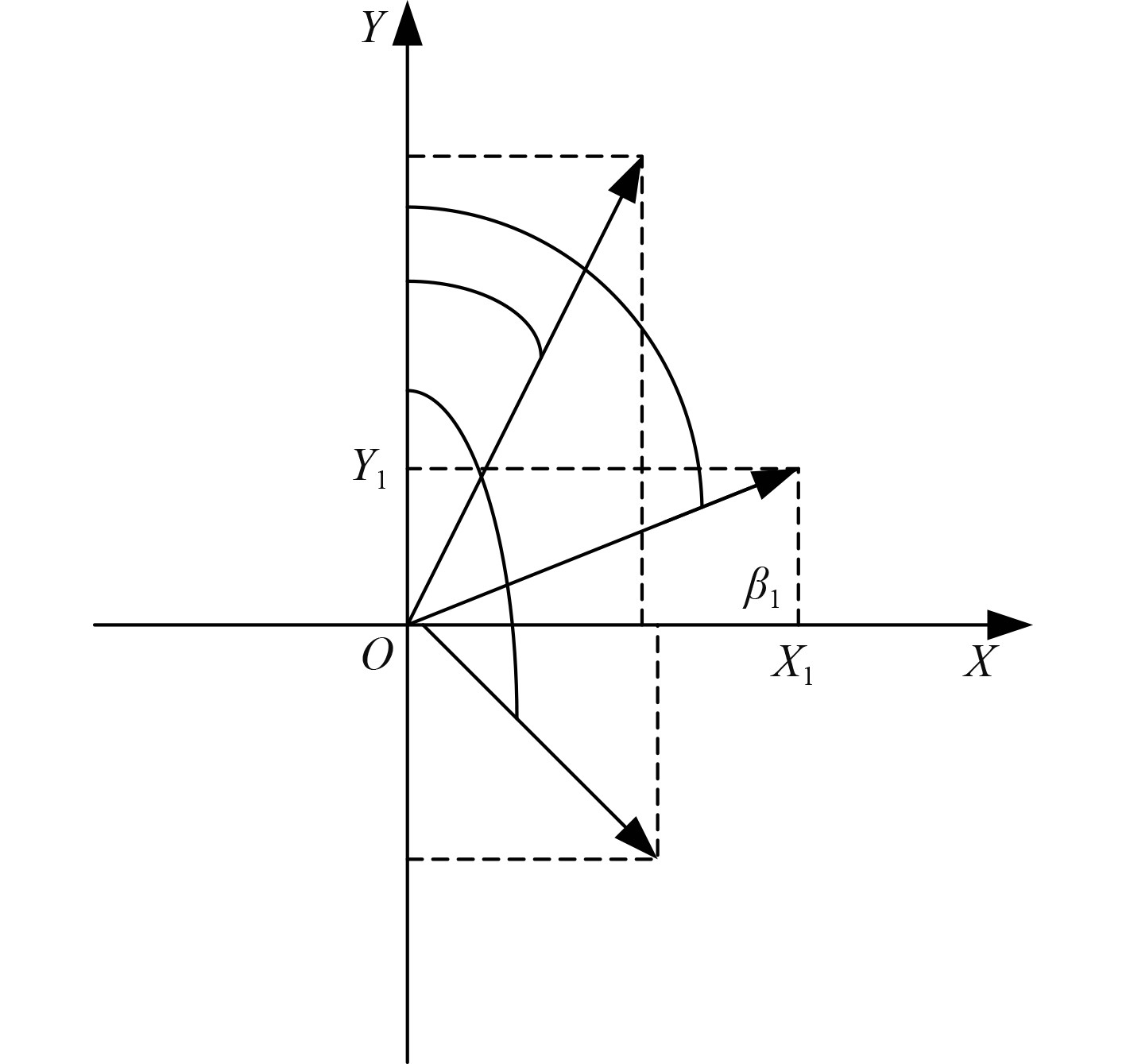
|
图 5 风向矢量合成原理图 Fig. 5 Schematic diagram of vector synthesis |
得到第一组测试数据的风向矢量分解为:
| $ \begin{gathered} {X_1} = {V_1}\cos {\beta _1}\text{,} \\ {Y_1} = {V_1}\sin {\beta _1} \text{,}\\ \end{gathered} $ |
| $ \begin{gathered} {X_n} = {V_n}\cos {\beta _n} \text{,} \\ {Y_n} = {V_n}\sin {\beta _n} \text{,} \\ \end{gathered} $ |
| $ \begin{gathered} X = \sum\limits_{i = 1}^n {{x_1},{x_2},...,{x_n}}\text{,} \\ Y = \sum\limits_{i = 1}^n {{y_1},{y_2},...,{y_n}} \text{,} \\ \end{gathered} $ |
得到风向的平均值和风向值为:
| $ \begin{gathered} \bar X = \frac{{\displaystyle\sum\limits_{i = 1}^n {{x_n}} }}{N},\\ \bar Y = \frac{{\displaystyle\sum\limits_{i = 1}^n {{y_n}} }}{N},\\ \bar \beta = \arctan \frac{{\bar X}}{{\bar Y}} 。\\ \end{gathered} $ |
监测平台选用的风速风向仪为A45固体传感器,基于IEC6122通信协议[6],监测平台的工作流程图如图6所示。
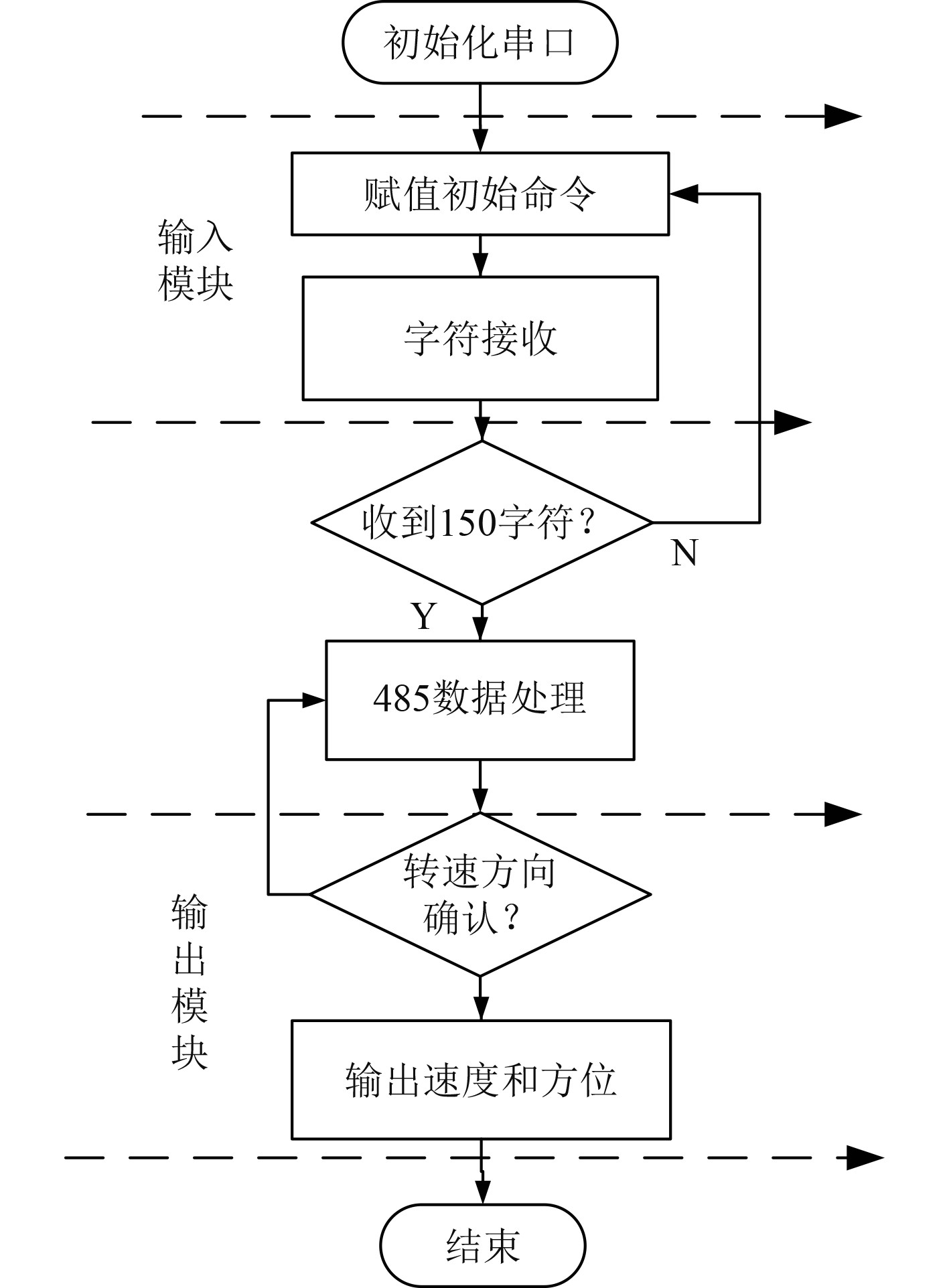
|
图 6 风速风向监测平台的工作流程图 Fig. 6 Flow chart of wind speed and direction monitoring platform |
风力助航船是一种新兴的新能源船舶,这种船舶能够利用海上丰富的风力资源,提高自身动力系统的性能,风力助航船的关键控制输入是风资源数据,本文针对风资源数据的采集原理、平台建设、数据后处理等进行详细研究,有一定的实际应用价值。
| [1] |
周凌, 赵前程, 石照耀, 等. 风电场风电机组机载风速仪状态自确认[J]. 太阳能学报, 2022, 43(11): 172-178. ZHOU Ling, ZHAO Qian-cheng, SHIZhao-yao, et al. State Self-confirmation of airborne anemometer for wind farm wind turbine[J]. Acta Energiae Solaris Sinica, 2022, 43(11): 172-178. |
| [2] |
周识略, 邹泽成, 杨名洋, 等. 基于X型恒温热线风速仪的径流涡轮入口旋流试验研究[J]. 车用发动机, 2022(5): 74-79. ZHOU Shi-lue, ZOU Ze-cheng, YANG Ming-yang, et al. Experimental study on swirl flow in runoff turbine inlet based on x-type thermostatic hot-wire anemometer[J]. Vehicle Engine, 2022(5): 74-79. DOI:10.3969/j.issn.1001-2222.2022.05.011 |
| [3] |
包云, 李亚群, 马祯, 等. 高速铁路风速监测异常数据判识方法研究[J]. 铁道建筑, 2021, 61(10): 154-157. BAO Yun, LI Ya-qun, MA Zhen, et al. Research on abnormal data identification method of wind speed monitoring for high-speed railway[J]. Railway Construction, 2021, 61(10): 154-157. DOI:10.3969/j.issn.1003-1995.2021.10.35 |
| [4] |
李松奎, 边泽强, 刘昕. 超声波风速仪测量结果不确定度评定[J]. 电子测量技术, 2019, 42(15): 112-116. LI Song-kui, BIAN Ze-qiang, LIU Xin. Evaluation of uncertainty of measurement results of ultrasonic anemometer[J]. Electronic Measurement Technique, 2019, 42(15): 112-116. |
| [5] |
王翰锋. 基于Fluent巷道断面平均风速点定位监测模拟研究[J]. 煤炭科学技术, 2015, 43(8): 92-96. WANG Han-feng. Research on location monitoring simulation of tunnel section average wind speed point based on fluent[J]. Coal Science and Technology, 2015, 43(8): 92-96. |
| [6] |
何建海, 胡以怀, 张建霞, 等. 风能在船舶上的应用现状及展望[J]. 船舶工程, 2013, 35(5): 112-115. HE Jian-hai, HU Yi-huai, ZHANG Jian-xia, et al. Application status and prospect of wind energy in ships[J]. Ship Engineering, 2013, 35(5): 112-115. |
 2023, Vol. 45
2023, Vol. 45
